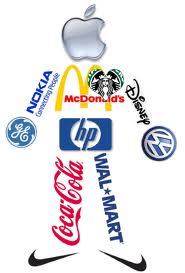Search results for: Marketing Communication Mix

Generally, two alternative approaches can be used for website evaluation: quantitative and qualitative. Quantitative approach, as the name suggests is closely associated with numbers and calculations such as the numbers of website visitors, visitor bounce rate, the numbers of countries the website is visited from etc. Qualitative approach, on the other hand, includes non-quantifiable criteria such as design, navigation, interactivity and others. Qualitative approach has been adopted for Tophams Hotel website evaluation, and accordingly, non-quantifiable elements have been selected as evaluation criteria. The rationale for the choice of qualitative approach relates to the fact that factors impacting website visits and visitor experiences are qualitative as well. This argument is supported by findings of the literature review provided above. The following table presents a set of website evaluation criteria selected to conduct Tophams Hotel website evaluation and briefly explains rationale for the choice of each criteria. Criteria Rationale for the choice of criteria First impression First impression has direct and significant impact on the visitor bounce rate on the website. Factors impacting first impression include download time of the website, design features and capabilities, presentation of credential validations etc. Navigation capabilities Nowadays website visitors expect advanced level of navigation capabilities and absence of navigation capabilities at this level is most likely to have negative implications on brand image. Quality of content Importance of usefulness and relevance of the content can not be disputed. The literature review found factors impacting content quality to include information being up-to-date, availability of the content in several languages, FAQs and others. Attractions Attractions are aimed at encouraging return visits to the website, and thus they play great role in achievement of website objectives. Ease of finding information This specific criterion can be marked as a critical success factor for any website and its importance is…
By John Dudovskiy
Category: E-Commerce

A wide range of factors have impact upon a brand than a business strategy and generally these factors can be divided into two categories: internal and external. Internal factors affecting brand include business strategy, internal conventions, brand legacy marketing mix and marketing implementation. External factors, on the other hand, include, but not limited to category, cultural, and needs conventions. Crossan and Apaydin (2010) confirm this viewpoint and specify core elements of the brand as expression, perception, and recognition that are subjected to the impact of internal and external factors specified above. Moreover, Fog et al. (2010) argue that regardless of industry and nature of the business brands cannot exist independent of the company, its organisational culture, suppliers, distributors and buyers, at the same time specifying these elements as factors affecting branding aspect of the business. It has been argued that “it can be easier to establish a new brand if there is a history of product or service experience which has already earned trust and credibility” (Davis and Baldwin, 2006, p.29). However, Alessandri (2009) offers an alternative viewpoint claiming that the level of effectiveness of branding strategy depends upon the quality of brand identity, the choice and the level of implementation of communication channels to promote the brand, and the quality of products and services above all. The personality of CEO of the company is considered to be another major factor affecting brands and branding initiatives by Fioroni and Titterton (2009). Moreover, the issues of brand personification have been explained by Fioroni and Titterton (2009) by referring to the example of Virgin Group, where it’s CEO Richard Branson has successfully established himself as a core of the brand. A wide range of secondary data authors share their viewpoints in terms of improving brand image and value in a global scale.…

To reach different markets or promote products or services to different locations or different people companies use a method called market segmentation. As Cumming (1994) explains, “Market segmentation describes the division of a market into homogenous groups which will respond differently to promotions, communications, advertising and other marketing mix variable.” Therefore, market segmentation is very important for most of all companies around the world. If a company cannot reach the market or area they will success; or the product or service they provide too expensive so the market they are in cannot afford, surely that company cannot expect to prospers but even fails as a company. Market segmentation Market segmentation is to divide the market into smaller segments. The main reason behind the market segmentation is to make easier to address the needs of smaller groups of customers, particularly if they have many characteristics in common (Breen, 2003). However, there are thing marketer needs to consider to see if a market must be segmented. The market in question must be large enough to segmented. Differences must exist between members of the market and these differences must be measurable through traditional collection methods (McElligiot, 2003). Lancaster et al (2002) argues that there is no “golden rule” when it comes to segmenting consumer markets. The marketing firm might have to investigate using different segmentation variables in order to identify the overall structure of market. Often it may be necessary to use a combination of segmentation variables to define the precise market segment. There are four variables commonly used for segmenting consumer markets: Geographic segmentation Demographic segmentation Psychographic segmentation Behavioural segmentation The first two are geographic and demographic segmentations are physical attribute classification, which refers to the dividing of a market into groups based characteristics, such as location, population, country of origin,…

Consumer decision making process comprises five stages: need recognition, information search, evaluation of alternatives, purchase and post-purchase behaviour. Marketing managers attempt to influence consumer behaviour during each of these stages as it has been discussed below in a greater detail. Need Recognition Need recognition is the first stage of consumer decision making process and it can be explained as “result of an imbalance between actual and desired needs” (Lamb et al, 2011, p.190). Interestingly, need recognition may relate to actual need of a perspective customer to a specific product or service, as well as, ‘perceived’ customer need imposed by businesses through effective marketing communication strategies. Specifically, the emergence of the latter form of customer need plays an integral role in customer impulse shopping, and accordingly retailers attempt to create a ‘need’ in customer’s mind for the products and services they are offering. For instance, ‘imposed’ needs in retail environment may include ‘need’ to be refreshed and energised by consuming a range of soft drinks and energy drinks sold by retailers, as well as, ‘need’ to follow fashion trends by purchasing specific items sold by retailers. Information Search The second stage of consumer decision making process relates to information search. Once a need is recognised by a perspective customer, he would seek for information about the available ways to satisfy the need. It is important to stress that “the extent to which the consumer needs to search for information depends on his current information levels and the perceived value of the additional information” (Pradhan, 2009, p.123). Customers are greatly influenced by marketing strategies of retailers during this stage of the decision – making process as well. Namely, retailers communicate information about the brand through various communication channels that might include any combination of advertising, direct marketing, public relations and…
By John Dudovskiy
Category: Consumer Behaviour

The importance of marketing has increased over the past several decades due to increasing rate of competition caused by globalisation, technological advancement, rising role of internet and other reasons. As a result, marketing has become an important aspect of the business for obtaining competitive advantage and therefore its main theories and principles are finding their wider applications. In other words, the necessity of marketing for businesses is confirmed by the fact that “businesses must sell products to survive and grow, and marketing activities help to sell their products” (Pride and Ferrell, 2008, p.16). This article critically analyses the importance of marketing in relation to the beverage industry in China through employing a range of marketing tools. Specifically the choice of marketing tools used to analyse beverage industry in China consist of marketing mix, PESTEL analysis and Porter’s Five Forces analysis. Marketing Mix Marketing mix can be defined as “a unique blend of product, place, promotion, and pricing strategies designed to produce mutually satisfying exchanges with a target market” (Lamb et al, 2008, p.44). In other words, effective strategies should be designed and implemented regarding all four components associated with a product or service – product, place, promotion, and pricing in order to ensure the sale of the product or service. This approach can be adopted by companies in beverage industry in China in order to ensure the success of the company in global level. A range of strategies are available managers in beverage industry in China can use to gain competitive edge regarding each component of the marketing mix. Product decisions China’s beverage industry managers can take in order to increase their market chare include the brand name of the beverage products, styling and safety of packaging, their expiry date etc. Marketing managers in beverage industry in China have…

Marks & Spencer (M&S) is a UK based clothing and luxury food retail company that has been founded in 1884 by Michael Marks and Thomas Spencer. The company has over 76,000 employees in a global level, and deals with over 2000 suppliers (Annual Report and Financial Statement, 2010). “The global influence of the company stretches from Europe to Russia, the Middle East, India and Asia at present – taking advantage of 3 of 4 BRIC nation markets” (Bunston, 2008, p.3). M&S homeware and clothing products account for 49% of its total business, whereas the remaining 51% account for food products. With more than 600 stores throughout the UK, the flagship M&S store is located at London’s Marble Arch and possesses the selling space of around 170,000 square feet (Marks and Spencer Group PLC, 2008, online). From the date it was formed M&S was steadily growing, focusing on the quality of its products and offering value for money. The profitability of the company had peaked in the financial year of 1997/98, shortly after which the company found itself into deep financial troubles. The reasons were the increasing level of profit margin, the refusal of the company to accept credit cards, the principle of the company to deal only with British suppliers etc. Then the company went through massive changes that included the introduction of new ‘Per Una’ ranges of clothing, acceptance of credit cards, more focus on customer services, etc, as a result of which the company was able to recover some of its market share. The company has engaged in a range of Corporate Social Responsibility (CSR) initiatives as well, and ‘Plan A’ initiative can be highlighted separately as the most notable one. The project has been assigned a budget of 200 million GBP and has a range of ambitious objectives to be…

Efficient special events are those that leave long lasting positive memories in audience and achieve their objectives as an event for organizers and other stakeholders. The actual event may last only few hours, but in order to organize them sometimes preparations need to be undertaken starting from months, or even years in advance, considerable amount of funds, and effort from many people are required to ensure the efficiency of the event. And the success of events largely depends on how competently they were managed. Special events have some fascinating elements incorporated in them that you can remember them during the whole remaining period of your life. Many of us can remember witnessing such an event, be it a festival, sport competition, celebration of a national holiday, or other, that we remember them with warm feelings and nostalgia, and look forward to experience it again. “The British Conference Market Trends Survey 2001 estimates that conferences and meetings are worth £7.3 billion annually. Exhibitions and trade fairs are calculated to be worth £2.04 billion annually, excluding the value of business transacted on them. This means that exhibitions are the fifth largest market medium, attracting 11 per cent of media expenditure in the UK (British Tourist Authority, 2006)” (Raj et al, 2008, p.4) For an event to be memorable and entertaining for the audience and to achieve its objectives, it has to be efficiently managed by competent managers. Event management differs in many aspects from managing a business unit in many other industries in a way that it requires from the manager a high degree of creativity, preparedness to deal with many unforeseen circumstances, and a high level of enthusiasm. Definitions There are many authors who have contributed to the subject of special events and there are many definitions proposed by…
By John Dudovskiy
Category: Industry Analysis

There are no arguments among business researchers and practitioners about the importance of providing excellent customer service to customers. Because of high level of competition in almost every industry, the customer bargaining power has increased significantly, and customers can easily turn to the competitors of the business if they are not satisfied with the level of customer service, as well as, any other aspect of the business. Today business are totally aware of the importance of the customer service, therefore try to create competitive edge for the company by providing excellent customer service and make considerable investments for these purpose by employing competent people to deal with their customers and training them on a regular basis. People who are customers of businesses also deal with various public organisations and agencies for a varied range of purposes being members of society. Because people are used to the high level of customer service as a result of dealing with many businesses regularly, they also expect the same level of customer service from public sector organisations as well (Agness, 2010) The principles operations of public sector organisations are based upon are different from the principles of business entities on the fundamental level. And primarily, this difference comes from the objectives of these two kinds organisations. While the main objective of any business entity is profit maximisation and they know that this objective can only be achieved when customers are satisfied with the level of the service they are receiving, the objectives of public sector organisations are to perform some functions within society mechanism, which is often not related to profit maximisation. Public Sector Customer Expectations The issue of increasing customer expectations became only urgent with after the level of competition intensified in many industries due to technological advancement, globalisation, internet and other…
By John Dudovskiy
Category: Customer Services

HTC Corporation (formerly known as High Tech Computer Corp.) is a Taiwan-based smartphone manufacturing company engaged in design, development, manufacturing and sales of mobile computers, personal digital assistant phones, touch phones and smart phones and offers its products in Europe, Asia pacific, North and Latin America, Africa and Middle East (Bloomberg, 2010). The company has gained a reputation in terms of innovation related to the features of their products as well as their design The Evolution of HTC HTC was founded in 1997 by three business people and technology enthusiasts Cher Wang, HT Cho and Peter Chou. The founders took the roles of Chairwoman, Director of Board and Chairman of HTC Foundation, and President and CEO respectively. At the initial period of business HTC was mainly involved in partnerships with companies like Compaq, Dell and HP designing and building PDAs (personal digital assistants) for them. The most innovative and acclaimed products of these brands HTC was closely involved in include Compaq iPAQ, Treo 650, O2 XDA, and Orange SPV (Hi, we’re HTC, 2010) The company was introduced to the public as an independent brand starting from June 2006, and manufactured its first own brand product HTC Touch, which is claimed to be by the company a first finger-friendly touch-screen smartphone in June 2007. Today HTC boasts with its popular products as Touch Diamond, Hero, HD2, HD Legend, and Desire, and has been ranked by Business Week as the second best performing technology company in Asia in 2007, and third place in Business Week Global listing in 2006. Internal and External Factors that Affected the Evolution of HTC There are set of internal and external factors that have affected to the evolution of HTC. One of the main internal factors that have affected the evolution of HTC does relate to…
